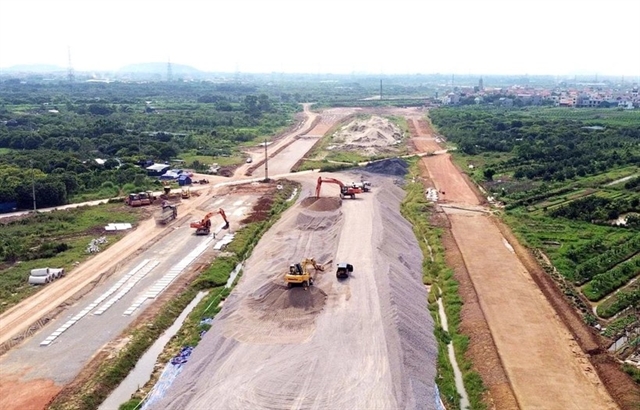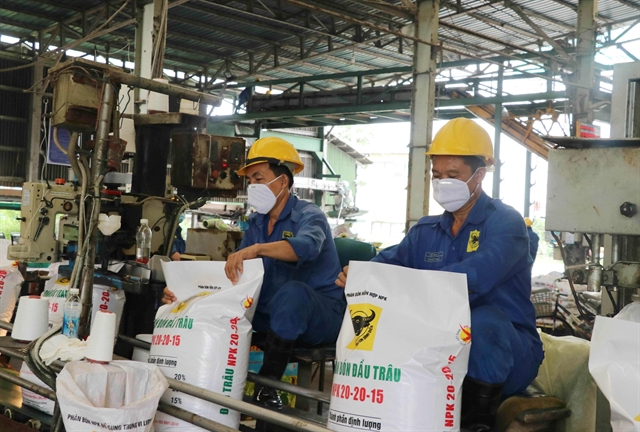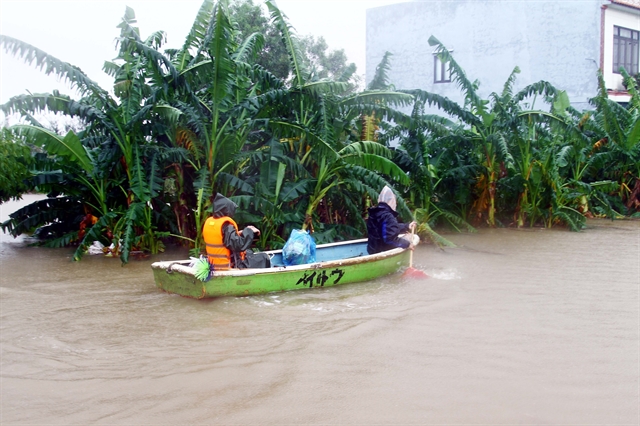 Economy
Economy

Rising demand for credit across Vietnam’s private sector is expected to drive bank loan books above the highs recorded last year.
 |
| Lending from the country's banking sector will increase by between 18 to 20 per cent this year, according to forecasts from the State Bank of Vietnam (SBV), on the back of strong economic growth. — Photo vnexpress.net |
HÀ NỘI (VNS) — Rising demand for credit across Vietnam’s private sector is expected to drive bank loan books above the highs recorded last year.
Lending from the country’s banking sector will increase by between 18 to 20 per cent this year, according to forecasts from the State Bank of Vietnam (SBV), on the back of strong economic growth.
However, small and medium-sized enterprises (SMEs) will likely continue to face borrowing challenges, despite their significant contribution to the economy.
While Vietnam’s government has pledged to implement new measures to support the SME sector, including enhanced training programmes and the development of business incubators, small businesses will be looking for banks to follow suit.
Credit growth remains solid
A report issued by the SBV in early February found that lending expanded by 17.3 per cent in 2015, down slightly on the previous estimate of 18 per cent, but well up on the 13 per cent initially forecast at the start of the year, and outpacing credit growth from the last four years.
Most of last year’s lending was dong-denominated, signalling that the SBV’s efforts to reduce reliance on foreign currency were yielding results. Just 11 per cent of outstanding loans were in foreign currencies.
Robust economic growth – projected to reach 6.7 per cent in 2016, according to the SBV, on par with the eight-year high recorded last year – should help drive continued lending growth.
Challenges for smaller businesses
While the central bank anticipates strong aggregate loan growth, Vietnam’s SMEs are expected to face continued challenges in accessing credit, with the segment recording 4 per cent credit growth in the year to June 2015, according to the Vietnam Bank Association.
Meanwhile, lending to the high-tech app industry, which has been prioritised by the government as a growth industry, climbed by some 43 per cent over the course of 2015.
Only about 30 per cent of SMEs are able to secure bank loans despite measures introduced by the government to support SME development, according to a survey conduced by the Science Institute of SMEs Management.
As a result, many SMEs have been forced to borrow from non-conventional lenders at higher interest rates. A requirement that loans must be secured was cited as a particular issue, with a lack of collateral inhibiting SMEs’ perceived creditworthiness.
Other challenges included a general tightening of credit conditions, as lenders sought to curb non-performing loan ratios.
Risk to growth
In addition to inhibiting individual business development, poor access to credit for SMEs presents obstacles for broader economic growth, given that 95% of all registered companies in Vietnam are small businesses, accounting for an estimated 40 per cent of GDP and just over half of all employment.
According to Dennis Hussey, CEO of ANZ Vietnam, the country could follow a similar growth trajectory as Japan or Taiwan if its banking sector becomes better integrated with local SMEs and removes funding bottlenecks.
“Neither foreign nor local banks operating in Vietnam are geared towards funding smaller businesses,” he told OBG. “Accessing financing tends to involve leveraging personal resources, such as friends and family.”
Võ Tấn Hoàng Văn of Saigon Commercial Bank believes that banks also face barriers to tapping the SME market due to their location. Lenders, especially foreign banks, operate a restricted number of branches, predominantly in densely populated urban hubs, he explained, putting them out of reach for many smaller businesses.
“A significant number of businesses looking for lower-level funding will go to a local bank,” he told OBG. “With 55-60 per cent of the population living in rural areas, a broad network is a prerequisite for targeting that segment of the population.”
Potential rate rise a concern
The expected increase in credit demand could see interest rates rise in 2016, according to some analysts, potentially creating greater obstacles for SME financing.
Borrowing costs could also come under pressure from any further upward interest rate movement by the US Federal Reserve, which has traditionally pressured developing economies like Việt Nam to implement rate hikes to prevent capital outflows. -- Oxford Business Group









